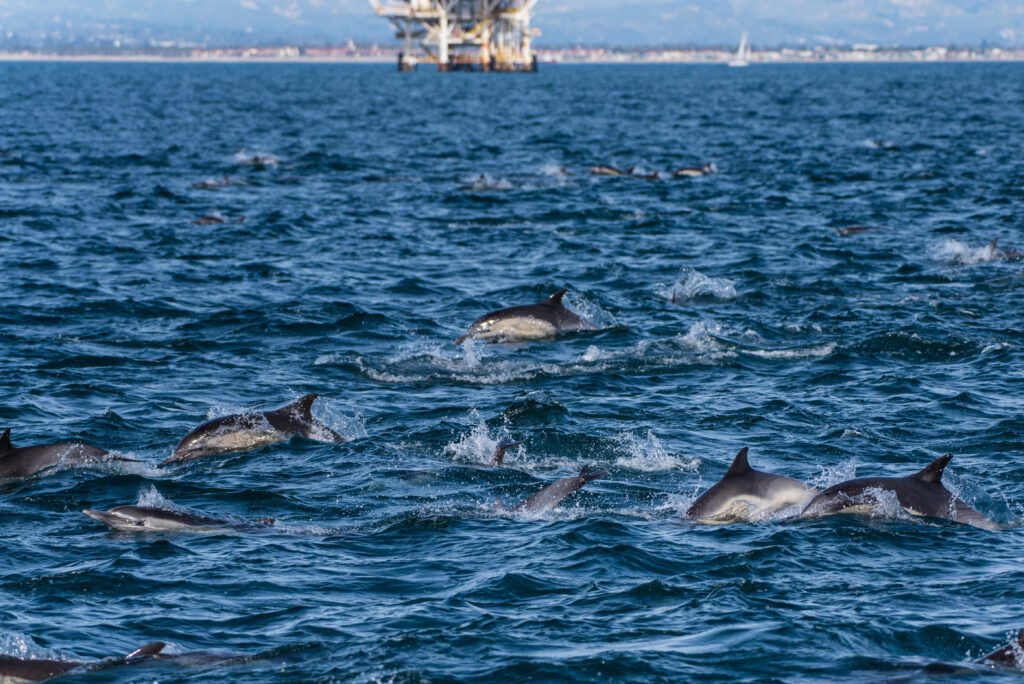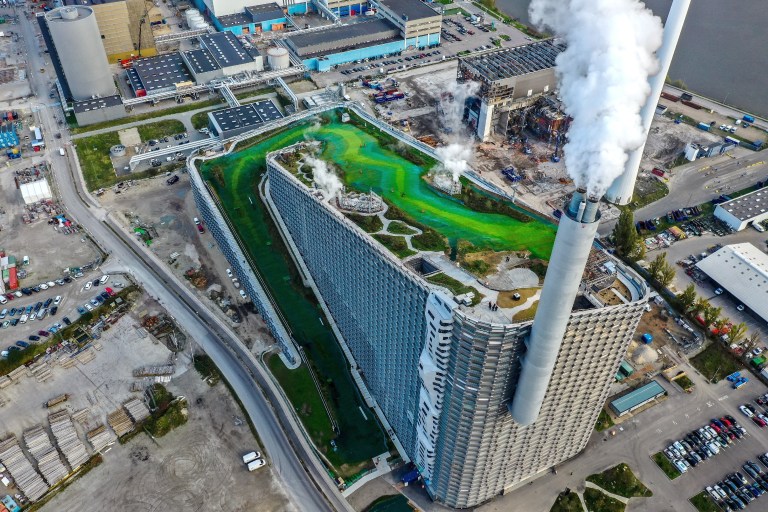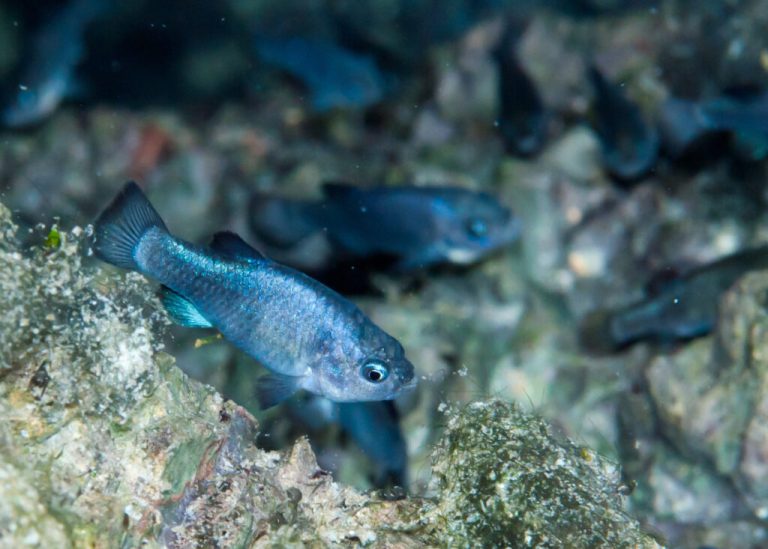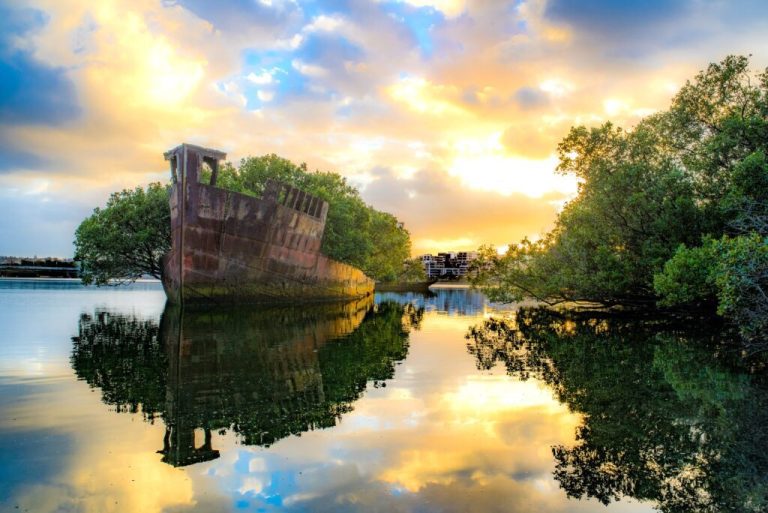More than two dozen oil platforms dot the waters off the coast of California. Of them, 15 are still active, a number that will shrink further as more are set to be decommissioned in the coming years. And just what to do with the disused platforms is currently the subject of debate.
Some believe the rigs — all built between 1967 and 1989 — are problematic and should be removed, an expensive process that could disturb surrounding wildlife. Others, including many environmentalists and scientists, are advocating for them to remain in place. Why? The human-made structures have become veritable if unlikely oases, habitats and havens for a vast array of marine species.
The platforms have been in place long enough to establish themselves as sorts of artificial reefs, as much a part of the ocean environment as its natural topography. Plankton, barnacles, rockfish, mussels, mackerel, and even mammals have made the massive metal frameworks their homes.
“Nature does abhor a vacuum,” University of California, Santa Barbara scientist Milton Love explained to The Guardian, “which is the reason that on a platform, every square inch is covered in life.”
His colleague Ann Scarborough Bull, a marine biologist, has been studying California’s oil rigs for over two decades and has seen firsthand the astonishing ecosystems that have sprung up around them. She and Love estimate that billions of animals in total rely on the rigs.
“These places are extremely productive, both for commercial and recreational fisheries and for invertebrates,” Bull said. She added: “If you take away habitat, then there’s no going back. You would never allow the willful destruction of a kelp bed, or of a rocky reef, even though rigs have similar biodiversity.”
In 2014, the two scientists co-authored a study on the amount of life the rigs host. They wrote that California’s oil and gas platforms are “among the most productive marine fish habitats globally,” determining them to be 27 times more productive than the state’s natural, rocky reefs.
Four years earlier, the state government had passed the California Marine Resources Legacy Act, which began allowing oil companies to only partially remove rigs “if the Ocean Protection Council (OPC) determines there would be a net benefit to the marine environment and other requirements are met.” The companies would then donate a portion of any money they saved by not removing the rigs to the California Endowment for Marine Preservation and other state funds.


Speaking to PBS in 2022, Amber Sparks, co-founder of the ocean stewardship non-profit Blue Latitudes Foundation, also showed support for leaving the rigs be. To her, the issue isn’t just about the life they directly affect, but also the influence they have on the larger ocean biome.
“Decades of scientific research really makes the case that these structures are functioning as essential fish habitat; fish are spawning, breeding, and growing to maturity within these ecosystems,” she said. “They are adding value and compensating for some of the nearshore habitat loss that we see.”
But while the rigs have undeniably become makeshift artificial reefs, they aren’t the sort that everyone believes should be playing the part. Some environmental groups see the disused platforms as unsightly rubble taking up space and in some cases leaving behind toxic debris.
“We certainly don’t think that the oil platforms should be left in place,” Pete Stauffer, ocean protection manager for the non-profit Surfrider Foundation, told the outlet. “They are a hazard that needs to be dealt with and our default position would probably be to support full removal.”
Leaving decommissioned oil platforms in place is not a new idea. In the Gulf of Mexico, at least 573 of the structures have been declared artificial reefs by the government. Sparks’ co-founder at Blue Latitudes, Emily Hazelwood, believes the magnitude of the Gulf’s oil industry compared to California is part of why the “Rigs-to-Reefs” policy has taken off in that area.


“One of the big reasons that reefing is so successful in the Gulf of Mexico is there are hundreds of offshore platforms in the Gulf so there’s a lot of familiarity with this program,” she explained. “People know what great fishery habitat reefed oil platforms provide and more often than not fishermen get upset when they’re removed, rather than the opposite.”
Hazelwood also added her insight to The Guardian’s recent reporting on the topic, noting that she hopes public perception of disused oil platforms shifts, and that they’ll be seen as “not just menacing industrial giants, but vibrant ecosystems that exist below the surface.”











